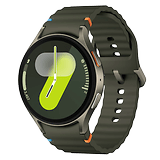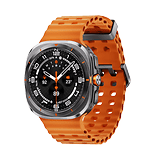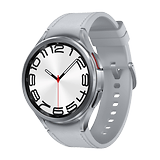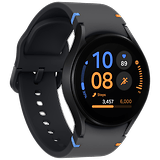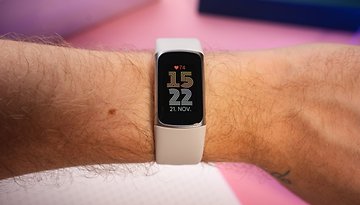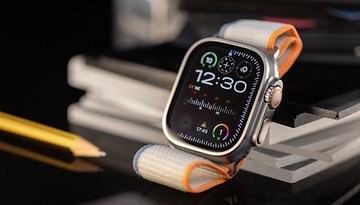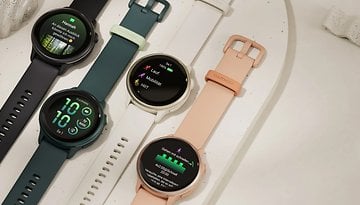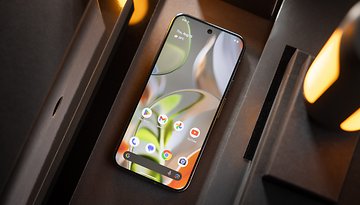Best Samsung Smartwatches for Every Budget & Lifestyle
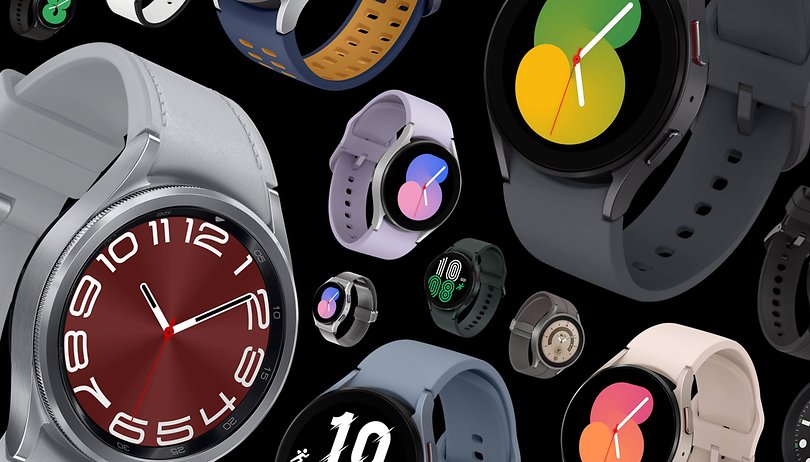

If you're rocking a Samsung Galaxy phone, your best bet for a smartwatch is, unsurprisingly, a Galaxy Watch. The Watch 7 nails the balance of sleek design and smart features, while the Ultra cranks things up for adventurers who want a rugged, do-it-all wearable. Both sit at the top of the smartwatch game—and with the right deal, you can snag one for less. Let me break down which one’s right for you.
Best-in-Class Samsung Galaxy Watches for Every Need
| Editor's choice | Pro tip | |
|---|---|---|
| Product | ||
| Image | 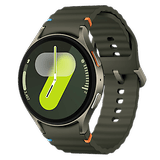 |
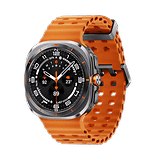 |
| Review |
|
|
| Overview |
|
|
| Key specs |
|
|
| Offers* |
|
|
1. Samsung Galaxy Watch 7: The Best All-Around Pick
The Galaxy Watch 7 continues Samsung’s legacy of sleek design and solid durability. The brand is also known for delivering stunning visuals and scratch-resistant displays. Wrapped in an armor aluminum chassis, this smartwatch is a great fit for both daily wear and outdoor adventures.
The Watch 7 features an enhanced BioActive sensor for improved accuracy—delivering reliable ECG readings, while its body composition reports provide valuable insights for assessing overall health. Its FDA-approved sleep apnea detection is a noteworthy addition, and the wide range of workout modes makes it ideal for those with well-defined fitness goals.
That said, battery life remains a weak spot—expect around a day and a half per charge, which might not cut it for users who prefer longer endurance. And while the Galaxy Watch 7 is packed with features, some perks remain exclusive to Samsung smartphone users, limiting the experience for those on other Android devices. Still, if you’re fully invested in the Samsung ecosystem, this smartwatch delivers a winning mix of style, performance, and cutting-edge health tracking.
Good
- Attractive and simple case
- Very good display with a great operating concept
- Unique tracking functions that offer even more
- Easy connection to Android smartphones
Bad
- Battery life is still too short
- Auto-tracking badly fragments workouts
- Some features remain Samsung-exclusive
- Not compatible with Apple's iOS
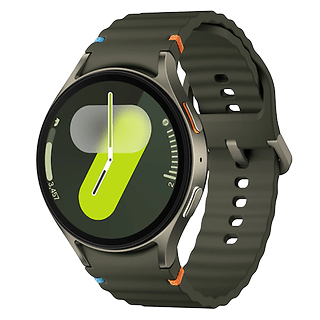
2. Galaxy Watch Ultra: The Ultimate Fitness Companion
The Galaxy Watch Ultra is the most advanced smartwatch in Samsung’s lineup. It comes in only one size, and its rugged durability makes it ideal for adventurers and fitness enthusiasts. Housed in a tough titanium chassis, it features a bright and sharp display, along with a customizable action button for quick access to key functions. As expected from an Ultra model, it’s designed to handle everything from high-intensity workouts to underwater excursions.
The BioActive sensor offers reliable heart rate monitoring and includes an FDA-approved sleep apnea detection feature. When it comes to fitness, the Watch Ultra provides a wide range of workout modes, including a multisport option. It also includes a recovery metric called Energy Score, a valuable tool for tracking post-workout recovery. Additionally, it features a new FTP (Functional Threshold Power) tool, though its setup process can be somewhat overwhelming.
That said, its chunky build might not be for everyone—those with smaller wrists or a preference for lightweight wearables might find it a bit bulky. Plus, as with most Samsung watches, some features remain exclusive to Galaxy smartphone users, which could be a drawback for other Android users. Still, if you’re looking for a feature-packed, ultra-durable smartwatch that can keep up with your toughest adventures, the Galaxy Watch Ultra is one of the best in the game.
Good
- A stylish statement on your wrist
- Vibrant, colorful display
- Sleek Ultra watch faces, though the selection is a bit limited
- The most accurate Galaxy Watch yet
- Multisport features are genuinely fun
Bad
- Only one size
- No support for external sensors
- Feels a bit confined to the Galaxy ecosystem
- Maximum of two days battery life
- Recharging takes longer than it should
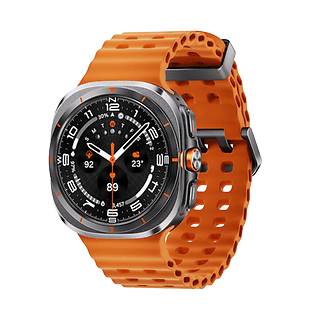
What Else Does Samsung Have to Offer?
Beyond the 2024 flagship models, Samsung’s smartwatch lineup includes budget-friendly options and previous-gen gems. If the latest and greatest isn’t a must for you, there are still other great choices to consider. The Galaxy Watch 6 Classic and the Galaxy Watch FE are both classy smartwatches that offer a range of advanced features tailored to different user preferences.
Galaxy Watch 6 Classic: The Rotating Bezel Returns
Although we only tested the Galaxy Watch 6, I'm definitely okay to suggest the Watch 6 Classic variant in this buying guide. The Classic reintroduces the physical rotating bezel, enhancing user navigation. It is available in 43 mm and 47 mm sizes, featuring a 20% larger display area compared to previous models, resulting in a more immersive visual experience.
Equipped with comprehensive health monitoring tools, the Watch 6 Classic offers advanced sleep coaching, heart rate monitoring, body composition analysis, and ECG capabilities. These features provide users with detailed insights into their health metrics.
Powered by the Exynos W930 processor and 2 GB of RAM, the smartwatch ensures smooth performance. It boasts a battery life of up to 40 hours on a single charge, with fast-charging capabilities that provide up to 45% charge in just 30 minutes.
Galaxy Watch FE: The Budget-Friendly Choice
While we haven't tested the Galaxy Watch FE yet—a review unit is on the way—I want to include it in this best list to highlight Samsung's budget-friendly option, perfect for those who want advanced features in a smartwatch without breaking the bank.
The Watch FE is a sleek, durable smartwatch with a 1.2-inch Super AMOLED display and sapphire crystal protection. Available in Black, Pink Gold, and Silver, it features interchangeable bands for a customizable look.
Equipped with a BioActive Sensor, it tracks heart rate, sleep, and body composition, plus 100+ workouts with advanced running metrics. Powered by the Exynos W920, 1.5 GB RAM, and 16 GB storage, it runs smoothly with up to 2 days of battery life.
With IP68 water/dust resistance, Google Play apps, Samsung Wallet, and remote camera control, it’s a powerful and stylish everyday companion.
Key Criteria for Selection
In curating this list of the best Samsung smartwatches, our team has personally tested the top recommendations, while additional mentions are here to help you make a well-informed decision. This guide provides a high-level overview of key features, but I strongly recommend checking out our in-depth reviews before making a purchase.
For this Samsung-focused selection, we primarily considered Galaxy smartphone owners. That said, if you’re using another Android device, a Galaxy Watch could still be a solid choice—but I’d encourage you to also explore our broader best smartwatches list to ensure Samsung is the right fit for you.
- Also read: The 4 best Fitness trackers to buy in 2025
How We Chose
Our top priority? User experience (UX). If you're already in the Samsung ecosystem, the Galaxy Watch lineup integrates seamlessly via the Galaxy Wearable app, offering a frictionless, intuitive experience. The app not only provides deep customization options and a built-in user manual but also automatically syncs compatible apps from your phone to your watch.
Beyond stability, Samsung’s smartwatch connectivity is also smart and proactive—if an issue arises, your watch can automatically launch the relevant settings in the Galaxy Wearable app for quick troubleshooting. Plus, the Google Play Store integration makes it incredibly easy to discover and install compatible apps directly from your wrist.
Why We Avoid Older Models
We’re only recommending current Samsung smartwatches—because, honestly, suggesting outdated models doesn't make much sense. Take the Galaxy Watch 5 Pro (review), for example—it’s still floating around third-party retailers at prices comparable to newer flagship models. If, after researching, you decide it’s the right fit for your budget, go for it! Just make sure you’re aware of Samsung’s software update policy and ongoing privacy and security support.
Got Questions?
If you need more details about any of the watches mentioned here—or if you're stuck between choices—drop us a message! We’ll get back to you with answers as soon as possible.
Samsung Galaxy Watches Compared
| Samsung Galaxy Watch 7 | Samsung Galaxy Watch Ultra | Samsung Galaxy Watch 6 Classic | Samsung Galaxy Watch FE | |
|---|---|---|---|---|
| Product | Galaxy Watch 7 | Galaxy Watch Ultra | Galaxy Watch 6 Classic | Galaxy Watch FE |
| Image |  |
 |
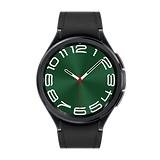 |
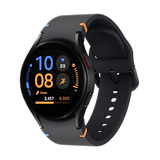 |
| Models / Versions | 40 mm | 44 mm | 47 mm | 43 mm | 47 mm | 40 mm |
| Colors | 44 mm: Green, Silver 40 mm: Green, Cream |
Titanium Silver, Titanium Gray, Titanium White | Black, Silver | Black, Silver, Pink Gold |
| Display | Super AMOLED | Sapphire glass | Full Color Always On Display 1.3-inch | 432 × 432 pixels | 40 mm or 1.5-inch | 480 × 480 pixels | 44 mm |
Super AMOLED | Sapphire glass | Full Color Always On Display 1.5-inch | 480 × 480 pixels |
Super AMOLED | Sapphire glass | Full Color Always On Display 1.3-inch | 432 × 432 pixels | 43 mm or 1.4-inch | 450 × 450 pixels | 47 mm |
Super AMOLED | Full Color Always On Display 1.2-inch | 360 × 360 pixels | 40 mm |
| Memory and SoC | Exynos W1000 (five‑core 3 nm) 2 GB RAM | 32 GB storage |
Exynos W1000 (Five‑Core 3 nm) 2 GB RAM | 32 GB storage |
Exynos W1000 (five‑core 3 nm) 2 GB RAM | 32 GB storage |
Exynos FE (optimized for FE) 2 GB RAM | 16 GB storage |
| OS | One UI 6 Watch based on Wear OS 5 | One UI 6 Watch based on Wear OS 5 | One UI 6 Watch based on Wear OS 5 | One UI 6 Watch based on Wear OS 5 |
| Sensors | Acceleration, position, barometer, ambient light, compass, Samsung BioActive Sensor (heart rate, ECG and BIA), infrared temperature sensor |
Acceleration, Position, Barometer, Ambient light, Compass, Samsung BioActive Sensor (heart rate, ECG and BIA), Infrared Temperature sensor |
Acceleration, position, barometer, ambient light, compass, Samsung BioActive Sensor (heart rate, ECG and BIA), infrared temperature sensor |
Acceleration, position, barometer, ambient light, compass, heart rate monitoring, ECG and BIA |
| Dimensions and Weight | 40 mm: 40.4 × 40.4 × 9.7 mm, 28.8 g 44 mm: 44.4 × 44.4 × 9.7 mm, 33.8 g |
47.1 × 47.4 × 12.1 mm | 60.5 g | 43 mm: 42.5 × 42.5 × 10.9 mm, 52 g 47 mm: 44.0 × 44.0 × 10.5 mm, 59 g |
40.4 × 40.4 × 9.7 mm, 28.8 g |
| Connectivity | LTE, Bluetooth 5.3, Wi-Fi 2.4+5GHz, NFC, GPS (L1+L5) | LTE, Bluetooth 5.3, Wi-Fi 2.4+5GHz, NFC, GPS (L1+L5) | LTE, Bluetooth 5.3, Wi-Fi 2.4+5GHz, NFC, GPS | LTE, Bluetooth 5.3, Wi-Fi 2.4+5GHz, NFC, GPS |
| Compatibility | Android 11 or higher and with more than 1.5 GB RAM | Android 11 or higher and with more than 1.5 GB RAM | Android 11 or higher and with more than 1.5 GB RAM | Android 11 or higher and with more than 1.5 GB RAM |
| Certification | 5 ATM + IP 68 / MIL-STD-810H | 10 ATM + IP 68 / MIL-STD-810H | 5 ATM + IP 68 | 5 ATM + IP 68 |
| Battery | 40 mm: 300 mAh 44 mm: 425 mAh |
590 mAh | Wireless charging support | 43 mm: 300 mAh 47 mm: 425 mAh |
300 mAh |
